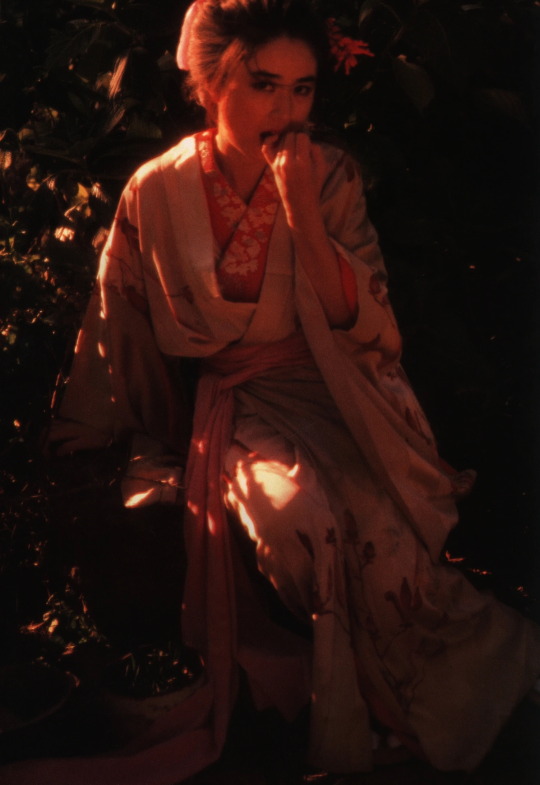#Naoko Otani
Photo

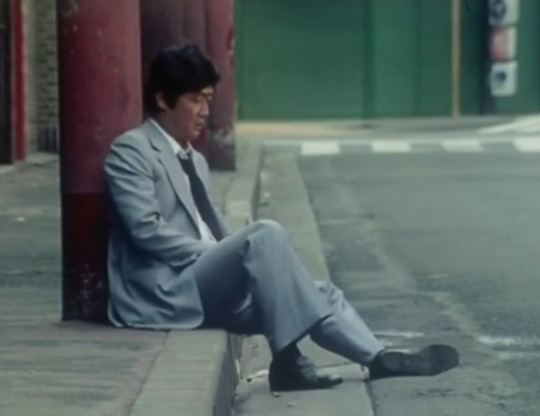


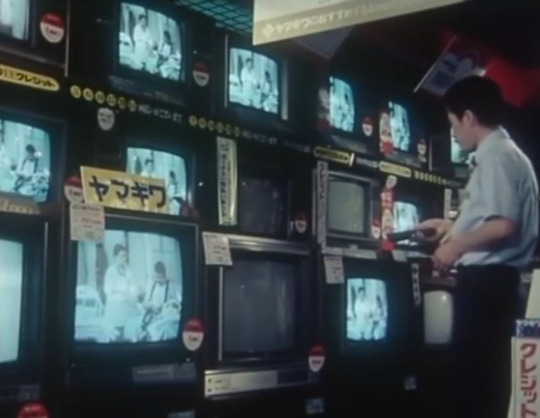





The Claws of the Divine Beast (1980)
#the claws of the divine beast#seijun suzuki#naoko otani#hiroshi sekiguchi#hiroshi kondo#isamu nagato#talks
9 notes
·
View notes
Text
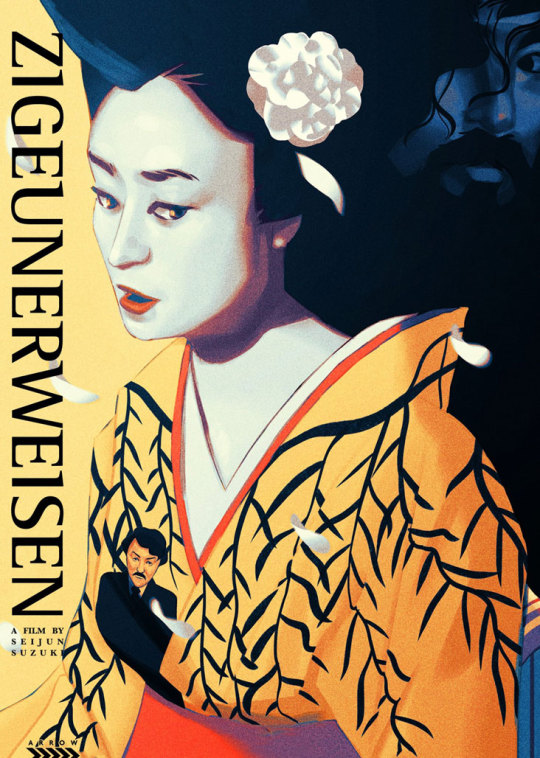
1 note
·
View note
Photo

'Righteous Woman' Jung Yu-mi, Lee Seo-jin 'goes to New York City' on one phone call...reunites after 23 hours (New York CityNew York City2)
Source: k-star-holic.blogspot.com
0 notes
Photo
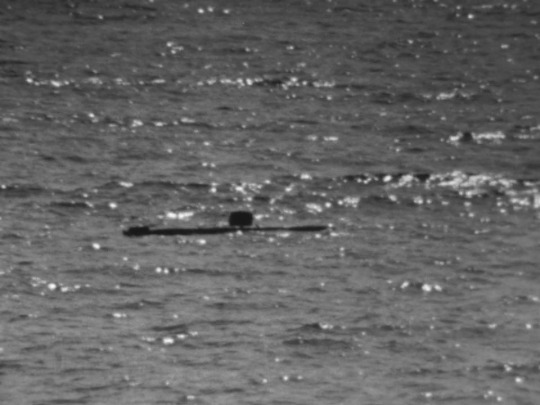




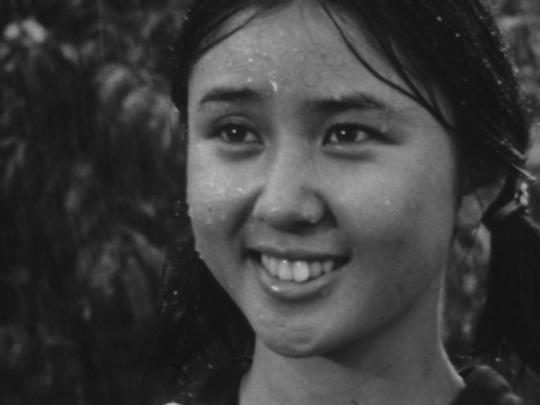


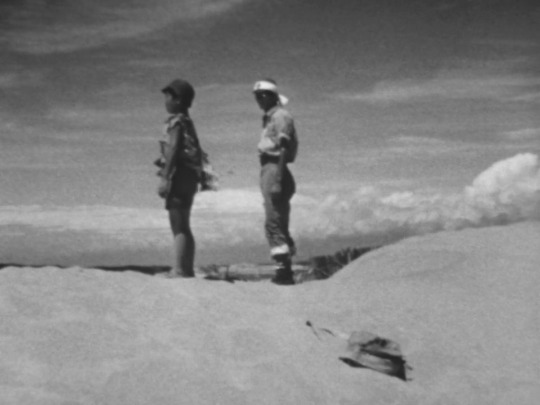
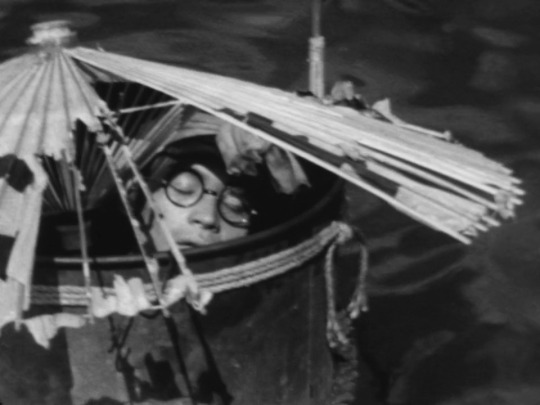
The Human Bullet 『肉弾』 (1968)
Written & Directed by Kihachi Okamoto 岡本 喜八
#the human bullet#nikudan#肉弾#1968#60s cinema#japanese new wave#japan#japanese cinema#japanese film#japanese movies#war film#Kihachi Okamoto#岡本 喜八#Minori Terada#寺田 農#Naoko Otani#大谷直子#japan film club
41 notes
·
View notes
Text



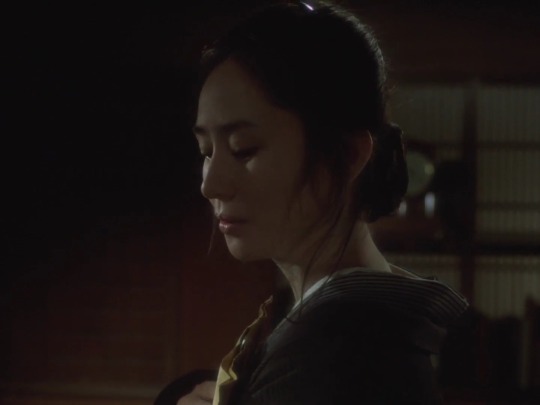
Naoko Otani in "Zigeunerweisen" (Suzuki Seijun, 1980)
5 notes
·
View notes
Photo







things are best when they begin to rot.
zigeunerweisen, dir. by seijun suzuki (1980)
30 notes
·
View notes
Photo
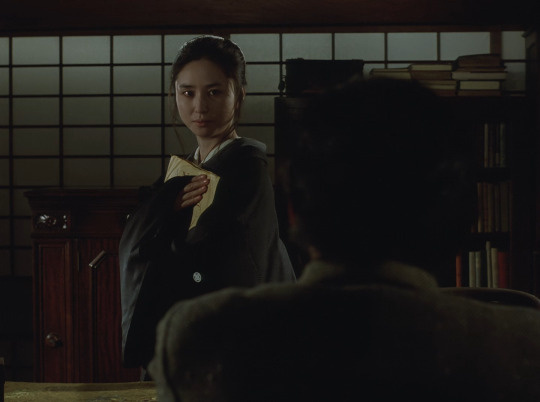



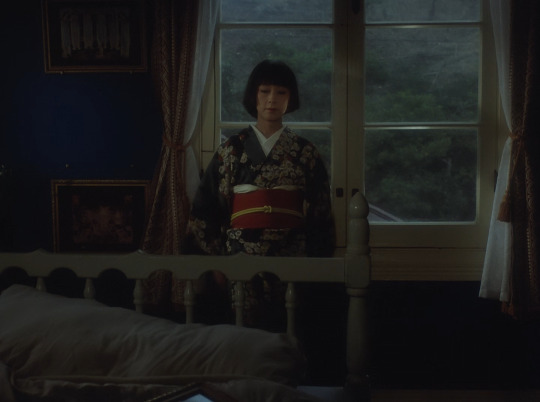
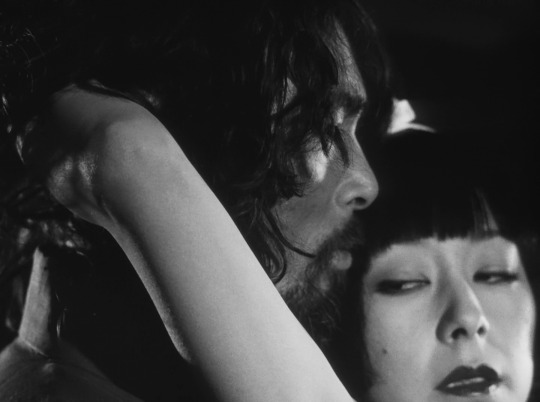
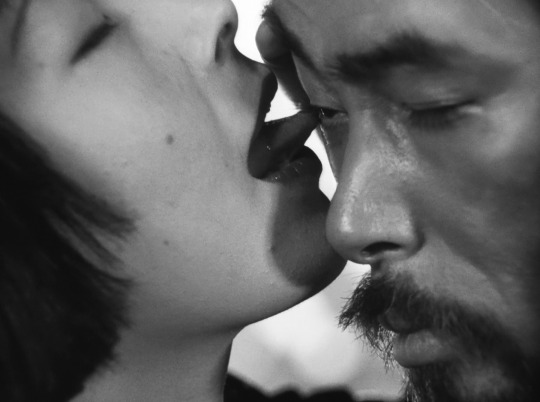
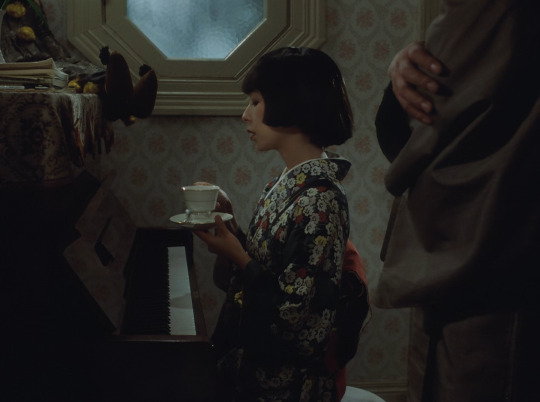
14 notes
·
View notes
Photo

Graph NHK May1969 - Naoko Otani 大谷直子
3 notes
·
View notes
Photo

Lee Seo-jin and Jung Yu-mi, "Come Quickly, I'll Pick You Up" ('New York City')
Source: k-star-holic.blogspot.com
0 notes
Text
Taishō Trilogy of Seijun Suzuki

As a salaried director at Nikkatsu, Japanese filmmaker Seijun Suzuki has been making crime movies for decades. He has directed around 40 movies from 1956 to 1967, of which Tokyo Drifter and Born to Kill are considered the most acclaimed. In a later attempt to reignite his career after splitting paths with Nikkatsu and veer off to the new ways of expression and stylistics, Suzuki started working on surrealistic feature film Zigeunerweisen becoming the first part of unformal Taisho Trilogy: Zigeunerweisen, Kagero-za, Yumeji. The three films are not linked with any similarities in the plot but set in the same period of emperor Taisho ruling the nation. It was the time of 1920-1930s. All films resemble hectic dreams and bear unmistakable visual similarities. The films have been meant to create the new stylistics for Suzuki developing his old strife to produce the shots of supreme beauty to strike not less than Godard’s shots used to do. Taisho Trilogy is an example of films lacking the coherence, yet remaining unforgettable with their quixotic and wild visuality.
Zigeunerweisen (ツィゴイネルワイゼン) - 1981

From my point of view, the best way to get a glimpse in the Taisho Trilogy is to watch the last part of it Yumeji. The last film encapsulates all the achievements of the trilogy. Comparing with Yumeji, Zigeunerweisen is almost impossible to comprehend. The film employs riddles in abundance, and the hints given can unlikely help to solve quite a few of them. In a surrealistic way, Suzuki’s tale shows the relations between two former co-workers Nakasago (portrayed by Yoshio Harada) and Aochi (Toshiya Fujita) who developed affairs with the wives of each other (at some point, Nakasago even suggests to exchange the wives). The story is ambiguous and not very coherent as Suzuki doesn’t bother himself to show the things in any sort of logical way or order.
In fact, the film is set in several dimensions, and it never becomes clear whether Nakasago has died or not, and whether Koine and Sono (both played by gorgeous Naoko Otani) are the same women or two different. We don’t really get a clear idea of why Nakasago killed a woman and if he actually killed her or not. The behaviour of a spooky girl also remains mysterious and unclear. Is she sort of ghost or she has bridged some spiritual connection with the world of death? We never learn it for sure. Moreover, we don’t even know where is the reality or dream or fantasy. Suzuki does his best to confuse the viewers with his surrealistic images and bizarre storytelling.
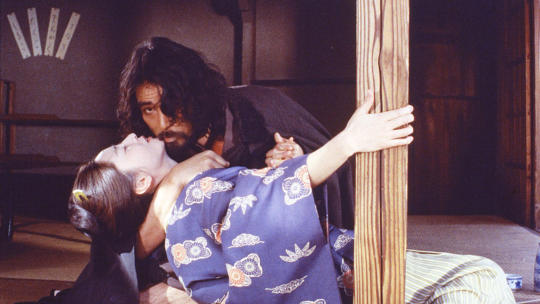
What we know for sure, is that Zigeunerweisen is the title of a vinyl record that Nakasago and Aochi used to listen. It has some gypsy tunes on it. Somehow, the record is used as the spiritual connection between Nakasago who dies and the outer world. Also, there are some references making to think Suzuki paints some ties with the political situation in Japan in the 1930s. The blind kids might symbolize of Japanese right forces getting insane prior to invading Manchuria (though, it is too obvious for Suzuki to be entirely sure that was an original intention). There is also a connection between the fact that Aochi is a German language professor, the relations of Japan and Germany and the title of record taken from German - Zigeunerweisen. And once again, this is just a guess as it never becomes clear what the author implied.
Suzuki uses Aochi as a sort of symbol of his audience: a confused man is trying to follow the story and understands very little from his friend’s behaviour. The ending is bizarre just like the whole movie, and we are left with no answers, as well as Aochi. However, giving the answers is not something the film has been made for. This is entirely visual work, and it is drastically important to pay attention to the shot, mise-en-scène, camera work and usage of light. Zigeunerweisen is a visually appealing film, and many shots are just like gorgeous paintings we enjoy. The matter of greatest importance for Suzuki was to fully realize and utilize his potential in elaborating the exquisite ways of artistic impressions. Making Zigeunerweisen, he made up his mind for creating a fresh visual language. He comes up with the material which is confusing, but it goes without a doubt Zigeunerweisen can be hardly compared to anything else. Watching Zigeunerweisen, at some point you realize there is probably no way to twig what is real and what is just irony, mockery, dream or fantasy. Nevertheless, the visual style is so solid and brilliant that it starts seeming the only way to accompany the frantic twists of the plot which remain spooky and incognizable just like the vinyl record or tunnel we see several times in Zigeunerweisen.

Kagero-Za (陽炎座) - 1981
The second film of Taisho Trilogy clarifies several points I remained dubious about after watching Zigeunerweisen and Yumeji. This trilogy is an example of substantially visual cinema where the logic and storyline are abandoned, in order to prioritize the importance of the mood and shocking stylistic beauty of the shots. Seijun Suzuki used to say “I make movies which make no sense and no money”, and this is true. Watching Zigeunerweisen, I was struggling to understand where do the twists of plot and expression lead and what is the idea behind it. Kagero-za or Heat-Hazed Theatre makes it transparent there was apparently something Suzuki implied, but it would remain incognizable as there are numerous ways to interpret the tale.
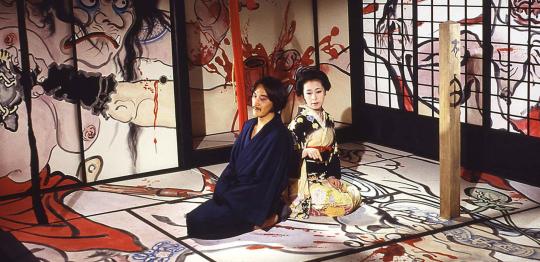
Kagero-Za is another psychological surrealistic tale in this trilogy. The plot is a formality as it never gets too clear. We follow the story of playwright Matsuzaki (portrayed by Yusaku Matsuda) who encounters his different mistresses, one of whom appears to be the wife of rich businessman Tamawaki (Katsuo Nakamura) who wants protagonist dead. Heroes pass away and appear again. In Zigeunerweisen I was still wondering what that supposed to mean, but with Kagero-Za I realized these are the actual fantasy ghosts who might bear symbolic meaning. The protagonists talk in one location, and in the next shot show up somewhere else. They jump from topic to topic, the dialogues are bizarre making both conversations and plot incoherent - though, this is something Suzuki has been trying to achieve.

Kagero-Za resembles a deranged dream or plot of a kabuki play. At some point, we actually see the events might be nothing but the new play of Matsuzaki who is seeking for the new story. We see awkward scenes on the theatre stage, and playwright observes them too. Perhaps, the whole story is like that - just a fantasy of Matsuzaki told in a surrealistic way.

What is Suzuki brilliant in is coming up with the fresh ideas of his shots. Dozens of shots require studying and might be considered art objects. The usage of vivid traditional paintings Suzuki employs is striking and spectacular, making the film’s visuality pretty impressive. Camera work and montage also follow the lead of Suzuki’s bizarre visual code. Again and again, Suzuki creates mise-en-scene of stunning beauty. The scenes and shots are often not linked to each other with any sort of explanation, but they are perfect with no respect to the story. Kagero-Za is not a film of non-linear plot and not a non-plot film either. It is an attempt to reject any sort of dictate created by traditional view on the films and necessity of coherent plot and background. Highly experimental and visually appealing work of Suzuki is meant to make neither sense nor money. But the aesthetics of Suzuki should be acclaimed as something rare and remarkable. This aesthetic will lead him to the third and last film of the trilogy Yumeji which I regard as the best part of Suzuki’s surrealistic Taisho films.

Yumeji (夢二) - 1991
The last film of Taisho trilogy in a very surrealistic tone tells a story of Japanese painter and poet Takahisa Yumeji (1884-1934) encountering several mistresses and his rival artist Gyoshu Inomura who is arguably more talented than Yumeji (portrayed by Kenji Savada). Throughout the account on the screen, we get a glance on the psychological and art struggles of the painter who is seeking the perfection and inspiration for his paintings.

The tantalizing tale is enhanced with numerous surrealistic forms, characters, images and entire scenes. It is also impossible to follow the stream of the tale before we get an idea we bump into the artistic fantasies of Yumeji, and the line between the death-life and reality-fiction is painted by Yumeji himself. The bizarre work of camera moving from the left to the right, and back again and showing the scenes with unusual composition and angles illustrate this far-fetched definition of different dimensions which unite and mix up in Yumeji’s mind. The story contains both surrealistic scenes and detective-like motif, though It is not entirely clear whether Wakiya (played by Yoshio Harada) has been actually murdered or not, and it is unclear if the whole story ever took place in the reality. The endless riddles bridge the gap between Suzuki and Buñuel with Robbe-Grillet.

What is certain is that the film tells about Yumeji’s perception of the art and women which are pretty much related in his life. There is no mood for art without passion Yumeji chases women with. He encounters the most beautiful ladies and seduces them, but he doesn’t love them in a human way. His fetish is about their postures, outfits, behavoiur is utilized for the ideas of paintings, and the women’s beauty for him is nothing but inspiration for art and poetry. He feeds himself on their boundless sexuality and allure like a vampire, and he is so addicted to their beauty that women, in fact, define his art. We see Yumeji is in the relationships with a woman who loves him, but the artistical mindset makes him seduce the other women as potential models or nudies.

Seijun Suzuki shows the gorgeous women and their perfect bodies in abundance to immerse himself and viewers in Yumeji’s fetish (and probably the director’s fetishism as well). The scenes with Tomoyo (played by Tomoko Mariya) and Hikono (Masumi Miyazaki) are charged with the enthralling sexuality the female protagonists radiate. They are frequently shot as the paintings, and this images strike with the boundless beauty Yumeji and the viewers fully immerse into. This is a very sexy and surreal fantasy which resembles Alain Robbe-Grillet’s L'Eden et après in an artistic way and Trans-Europ Express by the manner of storytelling. The usage of aggressive montage and dense colours reminds of the style of La Chinoise by Jean-Luc Godard.
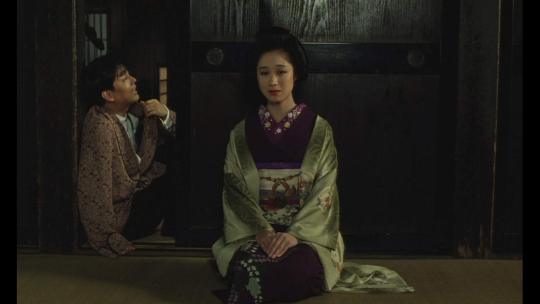
To sum up, Yumeji is a set of fetish fantasies made like a collection of his paintings he could have possibly completed. Every shot is like a painting where mise-en-scene stuns with beauty and bizarre mesmerizing power. The story is hard to follow and riddles might be very confusing, but it can be interpreted in many ways. Yumeji is important and striking as an art object and surrealistic experiment, yet there is probably no way to delve too deep into the film: it is much better to enjoy the sophisticated shots and the beauty of Yumeji’s mistresses portrayed by Tomoko Mariya, Masumi Miyazaki, and Reona Hirota. The last but not the least thing is the usage of music. This is the film Shigeru Umebayashi has written his brilliant and sublime music theme Yumeji for. Later the same theme would find international acclaim after being remarkably used in the film of Wong Kar-wai In the Mood for Love.
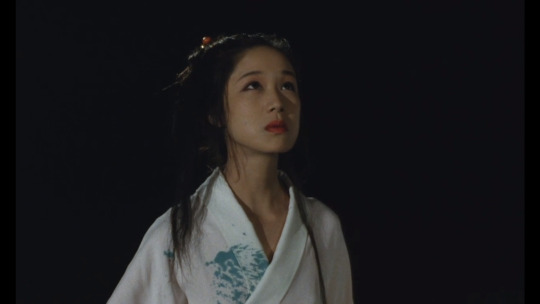
#yumeji#seijun suzuki#鈴木 清順#takehisa yumeji#tomoko mariya#masumi miyazaki#Kenji Savada#kagero-za#zigeunerweisen#taisho trilogy
23 notes
·
View notes
Text
Anime Film Review: Case Closed: The Crimson Love Letter
Anime Film Review: Case Closed: The Crimson Love Letter
Case Closed: The Crimson Love Letter is the 21st anime film released for the franchise.
Case Closed: The Crimson Love Letter
Directed by: Kobun Shizuno
Written by: Takahiro Okura
Starring: Kappei Yamaguchi, Minami Takayama, Wakana Yamazaki, Rikiya Koyama, Ryo Horikawa, Yuko Miyamura, Megumi Hayashibara, Yukiko Iwai, Ikue Otani, Wataru Takagi, Kazuhiro Yamaji, Masako Katsuki, Naoko Matsui, Masaki…

View On WordPress
0 notes
Video
Japanese: アナザー
Romaji: Anazā
Chinese: 替身
English: Another
Genre: Horror, Mystery, Supernatural, Thriller
Staff
Directed by: Tsutomu Mizushima
Written by: Ryō Higaki
Music by: Kow Otani
Studio: P.A.Works
Licensed by: AUS Hanabee, NA Sentai Filmworks, UK MVM Films
Original network: KNB, KBS, Tokyo MX, CTC
English network: US Anime Network
Original run: January 10, 2012 – March 27, 2012
Episodes: 12 + OVA
Cast
Koichi Sakakibara: Atsushi Abe
Mei Misaki: Natsumi Takamori
Naoya Teshigawara: Tomoaki Maeno
Yuuya Mochizuki: Kazutomi Yamamoto
Izumi Akazawa: Madoka Yonezawa
Tomohiko Kazami: Mitsuhiro Ichiki
Yukari Sakuragi: Ai Nonaka
Ikuo Takabayashi: Shou Takano
Aya Ayano: Mana Hirata
Junta Nakao: Kengo Kawanishi
Takako Sugiura: Misato Fukuen
Daisuke Wakui: Kousuke Kobayashi
Yumi Ogura: Iori Nomizu
Makoto Ouji: Go Inoue
Noboru Saruta: Genki Muro
Manabu Maejima: Keisuke Koumoto
San Watanabe: Satomi Akesaka
Kazue Satou: Yu Shimamura
Sayuri Kakinuma: Yoshino Nanjo
Yukito Tsujii: Ryota Asari
Kenzou Kawahori: Kenichi Mine
Matsuko Arita: Shizuka Furuya
Reiko Mikami: Naoko Sakakibara
Tatsuji Chibiki: Hiroaki Hirata
Shouji Kubodera: Kouzou Mito
Sanae Mizuno: Seiko Yoshida
Katsumi Matsunaga: Shinya Takahashi
Inose Mochizuki: Mahiro Inoue
Tamie Mikami: Mizuka Arima
Ryouhei Mikami: Kouji Yada
Yousuke Sakakibara: Takurou Kitagawa
Amane: Sayuri Sadaoka
Keiko Numata: Rie Takahashi
Kensaku Numata: -
Synopsis
In 1972, Misaki, a popular student of Yomiyama North Middle School’s class 3-3, suddenly died partway through the school year. Since then, the town of Yomiyama has been shrouded by a fearful atmosphere, from the dark secrets hidden deep within.
In 1998, Kouichi Sakakibara, a 15-year-old student transfers into class 3-3 of Yomiyama North Middle School and soon after discovers that a strange, gloomy mood seems to hang over all the students.
He also finds himself drawn to Mei Misaki, a mysterious and eyepatch-wearing student whom classmates and teacher seemingly ignore her. Paying no heed to warnings from everyone including Mei herself, Kouichi begins to get closer not only to her, but also to the truth behind the gruesome phenomenon plaguing class 3-3 of Yomiyama North Middle School.
This anime follows Kouichi, Mei and their classmates as they are pulled into the enigma surrounding a series of inevitable and tragic events, but unraveling the horror of Yomiyama may just cost them the ultimate price.
2 notes
·
View notes
Text
Dinners with Japanese friends in Tokyo/Carlos Pueblo
The reason why I arranged three nights stay in Tokyo was because we liked to have
dinners with our Japanese friends in the city and let Amy to have a taste of typical
Japanese cuisine other than those in Houston. Haruhiko Yamada helped me to locate
the restaurant, Shuraku near by our inn Jimbocho 1 Chome. It clam that all are directly
delivered from Wajima Port, Noto Peninsula, Ishikawa Prefecture on the northwest
part of Japan facing the sea of Japan. The Peninsula is famous for Japanese lacquer
developed since early 17 century from a wisdom of a local lord Moeda family. I was
very closed to Noto one year when I stayed at Kanazawa, the capital city of Ishikawa.
I also like to mention that I have been attracted by the popular song sung by Ishikawa
Sayuri during the 70’s, Noto Peninsula; therefore, I have made a visit and researched
the history of that war era in the late 16th century. Keyoshi and Keiko Otani accepted
the invitation and came to meet us on the second night of our stay in Tokyo.
We have known the Otani’s family ever since their time in our neighborhood as our
neighbor. Amy is very fond of Keiko because they have had four kids at a consecutive
ages at that time, 1,2,3,4 years old. We have kept correspondence since they return
to Japan. The kids are all in their 30’s except Naoko who is the third children added
to their family after returning to Japan. Keyoshi was the bureau chief of Nikkei Journal
in southern states territory at that time. After his retirement, he has been invited to be
a vice president of Tokyo Tech University, a very prestige engineering school back to
Meiji era and one of the best like Tokyo University. We usually go to his office at
Ookayama campus for a visit when we come to Japan. He is a tourist ambassador of his
hometown city, Himeji near Osaka and famous for its Castle; therefore, he has given us
passbooks to visit the Castle and next door, Kokoen a lovely garden of the previous lord.
I have met Haruhiko Yamada at a small inn in London outside of the Hyde Park and ever
since we have become pals and I always try to have dinners with him either in Tokyo or
London. He is a very well learned person with very good knowledge of Japan and I am
benefit from our dinner conversation to know Japan. After his retirement, he will engage
to a fruits business to import mango from Thailand and ship to Manila or Japan.
Both dinners, our friends have consulted with the restaurant manager for dishes they
order for us. I am very impressed with the raw fish, Sashimi, presented to us in a very
beautiful way, the fish are clean cut put on top of white basil leaves and white radish
thread, etc. A proper way to taste the delicacies is dip the raw fish to soy sauce and
apply a small portion of wasabi, similar to horse radish paste, and join with sake or
draft beer. I shall explain more in details later.
0 notes
Photo

Jung Yu-mi, Lee Seo-jin A phone call to New York City for 23 hours What is life?
Source: k-star-holic.blogspot.com
#Jung Yu-mi#Three Meals a Day#New York City#Lee Seo-jin#Taek-yeon#United States of America#Naoko Otani#Planes
0 notes
